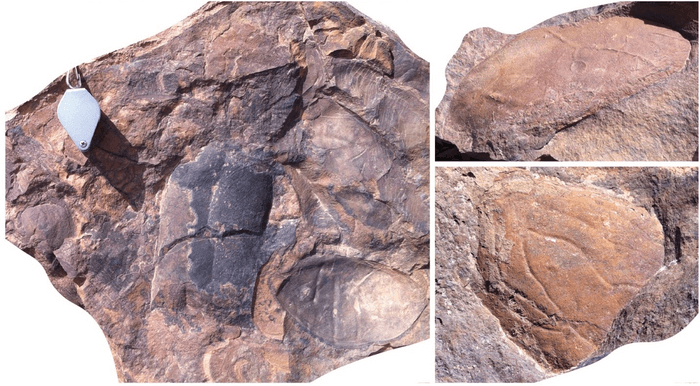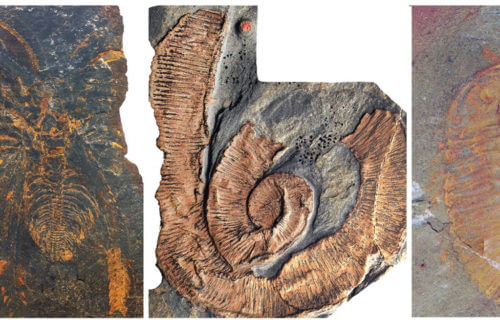EXETER, United Kingdom — Giant shrimp as big as the largest humans ruled the oceans 470 million years ago, according to new research.
Researchers say the bizarre beasts may have been the Great White sharks of their time and looked like the stuff of nightmares. They were up to six-foot-five inches long — the same height as movie star and pro wrestler Dwayne “The Rock” Johnson.
Big bulging eyes on stalks and huge claws that ripped prey to shreds turned them into apex predators, according to the new findings. The primitive creatures are the ancestors of today’s arthropods — creepy crawlies with jointed limbs.
Researchers unearthed fossilized remains at a site named Taichoute, part of a prehistoric graveyard in Morocco known as the “Fezouata Biota.” The animals were the product of a biological Big Bang known as the Cambrian explosion, when most animal groups emerged on Earth.
“Everything is new about this locality – its sedimentology, paleontology, and even the preservation of fossils – further highlighting the importance of the Fezouata Biota in completing our understanding of past life on Earth,” says lead author Dr. Farid Saleh from the University of Lausanne and Yunnan University, in a media release.
At the time, this present-day desert was under a shallow ocean. Early evidence records numerous large free-swimming arthropods. Dr. Saleh says more research is necessary to properly analyze these fragments, but based on previously described specimens, the giant arthropods could have been up to two meters in length — larger than the average person.

Imprints of exoskeletons encased in mud and sand are very different from others previously described from 50 miles away. It opens the door to new avenues for paleontological and ecological research, according to the international team.
“While the giant arthropods we discovered have not yet been fully identified, some may belong to previously described species of the Fezouata Biota, and some will certainly be new species,” says co-author Dr. Xiaoya Ma from the University of Exeter and Yunnan University. “Nevertheless, their large size and free-swimming lifestyle suggest they played a unique role in these ecosystems.”
The Fezouata Shale was recently selected as one of the 100 most important geological sites worldwide. It is vital for understanding evolution during the Early Ordovician period, about 470 million years ago.
The fossils include mineralized shells. Some show soft parts such as internal organs, enabling anatomical investigation. Repeated storms and waves buried whole communities — explaining the exceptional preservation. The mysterious species are dominated by fragments of giant arthropods.
“Carcasses were transported to a relatively deep marine environment by underwater landslides, which contrasts with previous discoveries of carcass preservation in shallower settings, which were buried in place by storm deposits,” adds Dr. Romain Vaucher, also from the University of Lausanne.
The findings are published in Scientific Reports.
South West News Service writer Mark Waghorn contributed to this report.

